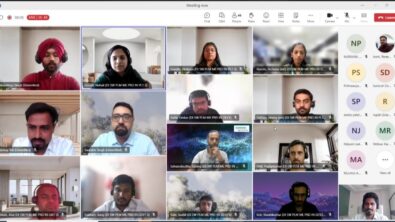How to think like an engineer
Women and girls make up only 25 percent of the science and engineering workforce; only 13 percent of mechanical engineering undergraduates; 14.2 percent of doctorate degrees in mechanical engineering. More broadly, women make up 49 percent of the college-educated workforce, but only 14 percent of practicing engineers nationwide.
When these disparities persist, everyone suffers. Women miss out on opportunities in growing and highly paid occupations that require engineering skills.
Diverse design teams are more innovative and often avoid key flaws when designing products and systems with which we interact on a daily basis. Early airbags designed by primarily male design teams worked for adult male bodies, but resulted in avoidable deaths of female and child passengers. Early voice recognition systems failed to recognize female voices because they were calibrated for standard male voices.
Let’s change this. We need female insight and creativity to help solve the problems facing our world. But how do we encourage women to pursue engineering fields?
Encourage girls and all students to think like an engineer in 5 easy steps. Check out this video and share with an aspiring engineer in your life today.
Encourage girls and all students to think like an engineer in 5 easy steps:
1. Ask. Identify the problem or problems.
Focus on how engineers make an impact on the world and the need for creativity, communication and teamwork in the engineering profession. It’s a multifaceted story.
Even here at Siemens, we have no shortage of stories about the problems we solve every day.
Our customers are designing prosthetics that empower amputees to walk and run again, robots that rehabilitate stroke victims, batteries that power all of our portable devices and new materials that could protect our athletes from damaging hits. Our customers develop techniques to perform minimally invasive surgery with ultrafast lasers, and they study the intensive demands of the energy industry on limited water resources.
Students should be able to see firsthand how their efforts affect the lives of real people, which expands our knowledge of how to create next-generation designs.
2. Imagine. Think of all the possible solutions – not just the “right” solution.
Create different and interesting experiences for women and girls. Create opportunities for them explore technology in an interactive and insightful way – such as workshops in robotics, mechanics and coding – it is possible to give them practical knowledge and understanding of the impact that they can have being part of innovative projects.
3. Plan. Take notes, label, and organize.
Teach students that engineers work with materials to solve problems. Some build bridges across rivers. Others design structures to support heavy loads under many different conditions. Still others design roads over mountain passes and tunnels through mountains. All engineers follow similar processes as they build and test products or solve problems, each requiring detailed notes, planning and organization.
4. Create. Build and test different solutions. Don’t be afraid to fail.
In a rapidly changing world, we need to teach students the importance of iteration.
ITERATE. ITERATE. ITERATE… THEN ITERATE AGAIN.
It should be our beckoning call. We need to encourage young women and girls to develop their creative, analytical and spatial skills, laying the foundation for further scientific exploration as they grow.
5. Improve. Adjust the design to make it better.
Students learn how to navigate a challenge by trying, failing and rethinking their designs and then trying some more. The idea that failure is good can be a radical concept in the classroom, and it can be a new experience for students, but it’s how engineering works. Each failure informs a future design that brings an engineer one step closer to success. If we can bring this kind of thinking into the classroom, we’re taking a step in the right direction.
—
Engineering is not the only profession that benefits from a nuanced story. The value of a medical degree is as much about saved lives and improved health as about the organic chemistry class along the way. The value of an education degree is as much about the young lives transformed by excellent teaching as the impossibly difficult history class along the way. And the value of an engineering degree is as much about empowering a young engineer to make our engineered world a better place as the calculus class that kept her up late every night.
We need to support and encourage women and girls to build the math, science and engineering skills they need to be successful engineers, but we also need to help them develop a broader understanding of those skills as tools for building a better engineered world. When we begin to tell multifaceted stories, we find that a much larger and more diverse set of students identify themselves as engineers.
It’s on you now. Go encourage women and girls in your life to #ThinkLikeAnEngineer. Help women and girls build their skills using our project-based challenges and free Solid Edge software.
Learn more at siemens.com/plm/ThinkLikeAnEngineer.


